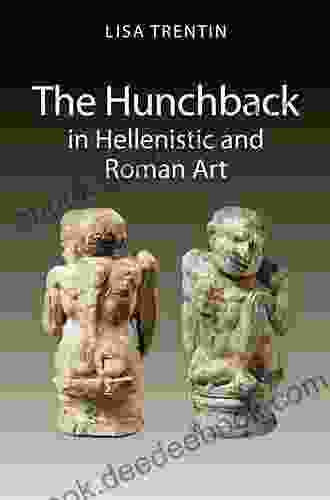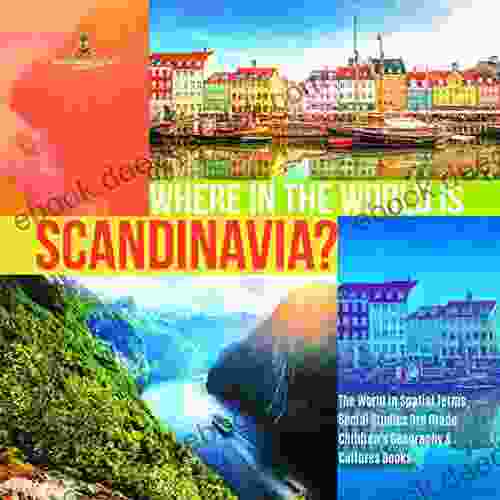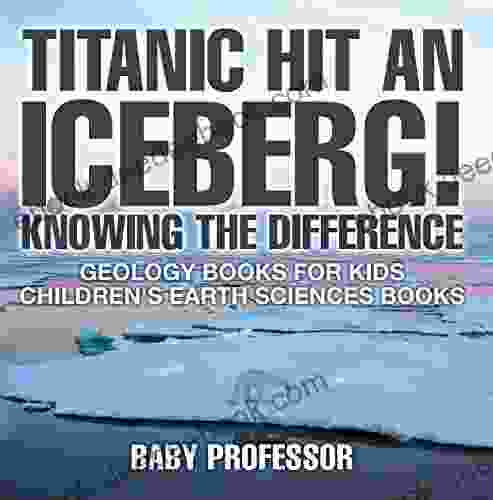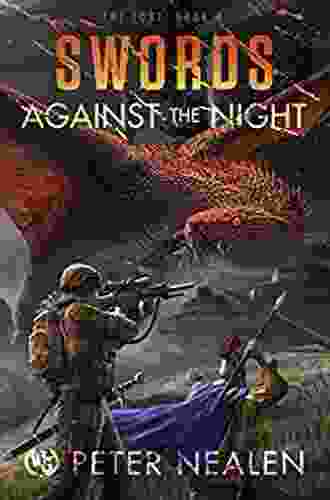Titanic Hit An Iceberg: Icebergs Vs. Glaciers - Knowing The Difference (Geology For You)

The sinking of the RMS Titanic in 1912 was a maritime disaster that shocked the world. The ship, which was thought to be unsinkable, hit an iceberg on its maiden voyage from Southampton to New York City. The iceberg punctured the ship's hull, causing it to take on water and eventually sink. More than 1,500 people died in the disaster.
The sinking of the Titanic has been the subject of much speculation and debate over the years. One of the most common questions is: what kind of iceberg did the Titanic hit? Was it a glacier?
In this article, we will explore the difference between icebergs and glaciers, and we will discuss the type of iceberg that the Titanic hit.
4.4 out of 5
| Language | : | English |
| File size | : | 3660 KB |
| Screen Reader | : | Supported |
| Print length | : | 64 pages |
An iceberg is a large piece of ice that has broken off from a glacier or ice sheet. Icebergs are typically found in the Arctic and Antarctic oceans, but they can also be found in other parts of the world, such as the North Atlantic.
Icebergs are formed when glaciers or ice sheets calve, or break off. Calving occurs when the weight of the glacier or ice sheet becomes too great for the ice to support itself. The ice breaks off and falls into the ocean.
Icebergs can be of various sizes. Some icebergs are small, while others can be enormous. The largest iceberg ever recorded was over 100 miles long and 50 miles wide.
Icebergs are a hazard to shipping. Ships can collide with icebergs, causing damage or even sinking. The Titanic is just one example of a ship that was sunk by an iceberg.
A glacier is a large mass of ice that forms on land. Glaciers are found in many parts of the world, including the Arctic, Antarctic, and Himalayas.
Glaciers are formed when snow accumulates and compresses over time. As the snow compresses, it turns into ice. Glaciers can grow to be very large. Some glaciers are hundreds of miles long and thousands of feet thick.
Glaciers move slowly downhill. The movement of glaciers is caused by the weight of the ice. Glaciers can carve out valleys and other landforms as they move.
Glaciers are a valuable source of fresh water. Glaciers store water that can be used for drinking, irrigation, and hydropower. Glaciers also play an important role in the global climate. Glaciers reflect sunlight back into space, which helps to cool the planet.
Icebergs and glaciers are both made of ice, but there are some key differences between the two.
- Size: Icebergs are typically smaller than glaciers. Glaciers can be hundreds of miles long and thousands of feet thick, while icebergs are typically only a few miles long and a few hundred feet thick.
- Location: Icebergs are found in the ocean, while glaciers are found on land.
- Movement: Icebergs move with the ocean currents, while glaciers move slowly downhill.
- Origin: Icebergs are formed when glaciers or ice sheets calve, or break off. Glaciers are formed when snow accumulates and compresses over time.
The Titanic hit a type of iceberg known as an ice island. Ice islands are large, flat-topped icebergs that are found in the Arctic Ocean. Ice islands are formed when glaciers calve and the icebergs drift away from the glacier.
Ice islands can be very large. Some ice islands are over 100 miles long and 50 miles wide. Ice islands are also very thick. Some ice islands are over 1,000 feet thick.
Ice islands are a hazard to shipping. Ships can collide with ice islands, causing damage or even sinking. The Titanic is just one example of a ship that was sunk by an ice island.
The sinking of the Titanic was a maritime disaster that shocked the world. The ship, which was thought to be unsinkable, hit an iceberg on its maiden voyage from Southampton to New York City. The iceberg punctured the ship's hull, causing it to take on water and eventually sink. More than 1,500 people died in the disaster.
The iceberg that the Titanic hit was a type of iceberg known as an ice island. Ice islands are large, flat-topped icebergs that are found in the Arctic Ocean. Ice islands are formed when glaciers calve and the icebergs drift away from the glacier.
Ice islands are a hazard to shipping. Ships can collide with ice islands, causing damage or even sinking. The Titanic is just one example of a ship that was sunk by an ice island.
4.4 out of 5
| Language | : | English |
| File size | : | 3660 KB |
| Screen Reader | : | Supported |
| Print length | : | 64 pages |
Do you want to contribute by writing guest posts on this blog?
Please contact us and send us a resume of previous articles that you have written.
 Novel
Novel Text
Text Genre
Genre Library
Library Paperback
Paperback E-book
E-book Newspaper
Newspaper Paragraph
Paragraph Sentence
Sentence Glossary
Glossary Bibliography
Bibliography Foreword
Foreword Synopsis
Synopsis Annotation
Annotation Manuscript
Manuscript Scroll
Scroll Codex
Codex Tome
Tome Library card
Library card Biography
Biography Autobiography
Autobiography Memoir
Memoir Reference
Reference Dictionary
Dictionary Thesaurus
Thesaurus Character
Character Librarian
Librarian Card Catalog
Card Catalog Borrowing
Borrowing Stacks
Stacks Periodicals
Periodicals Study
Study Research
Research Scholarly
Scholarly Lending
Lending Academic
Academic Journals
Journals Awards
Awards Book Club
Book Club Textbooks
Textbooks Shirley Jackson
Shirley Jackson Grazia Ietto Gillies
Grazia Ietto Gillies C E Wilson
C E Wilson Phil Collins
Phil Collins Marina Carr
Marina Carr Erin Reese
Erin Reese Gary Shteyngart
Gary Shteyngart Stan Shubel
Stan Shubel B D Lutz
B D Lutz Rob Roznowski
Rob Roznowski Cartez Augustus
Cartez Augustus Michael Mcgarrity
Michael Mcgarrity Bob Irving
Bob Irving Tim Pierce
Tim Pierce M Pell
M Pell Ayik Chut Deng
Ayik Chut Deng Pepper Schwartz
Pepper Schwartz Willy Russell
Willy Russell Rupert Darwall
Rupert Darwall James E Doyle
James E Doyle
Light bulbAdvertise smarter! Our strategic ad space ensures maximum exposure. Reserve your spot today!

 Jared NelsonUnveiling the Power of B2B Content: The Ultimate Guide to Crafting Compelling...
Jared NelsonUnveiling the Power of B2B Content: The Ultimate Guide to Crafting Compelling... Mario BenedettiFollow ·6.9k
Mario BenedettiFollow ·6.9k Diego BlairFollow ·3.7k
Diego BlairFollow ·3.7k Hayden MitchellFollow ·7.2k
Hayden MitchellFollow ·7.2k Theodore MitchellFollow ·10.8k
Theodore MitchellFollow ·10.8k Jedidiah HayesFollow ·13.6k
Jedidiah HayesFollow ·13.6k Reed MitchellFollow ·11k
Reed MitchellFollow ·11k J.D. SalingerFollow ·12.5k
J.D. SalingerFollow ·12.5k Anthony WellsFollow ·10.6k
Anthony WellsFollow ·10.6k

 E.E. Cummings
E.E. CummingsThe Routledge International Handbook on Fear of Crime
Fear of crime is a serious problem that can...

 Fletcher Mitchell
Fletcher MitchellThe Hunchback in Hellenistic and Roman Art: A...
The hunchback, or kyphosis, is a physical...

 Victor Turner
Victor TurnerA Comprehensive Guide to Needle Felting for Moms:...
Needle felting, a captivating craft...

 Joseph Foster
Joseph FosterWhere is Scandinavia?
Scandinavia is a region in...

 Leon Foster
Leon FosterNovel Shades of Magic: A Masterpiece of Magical...
An Enthralling...
4.4 out of 5
| Language | : | English |
| File size | : | 3660 KB |
| Screen Reader | : | Supported |
| Print length | : | 64 pages |












